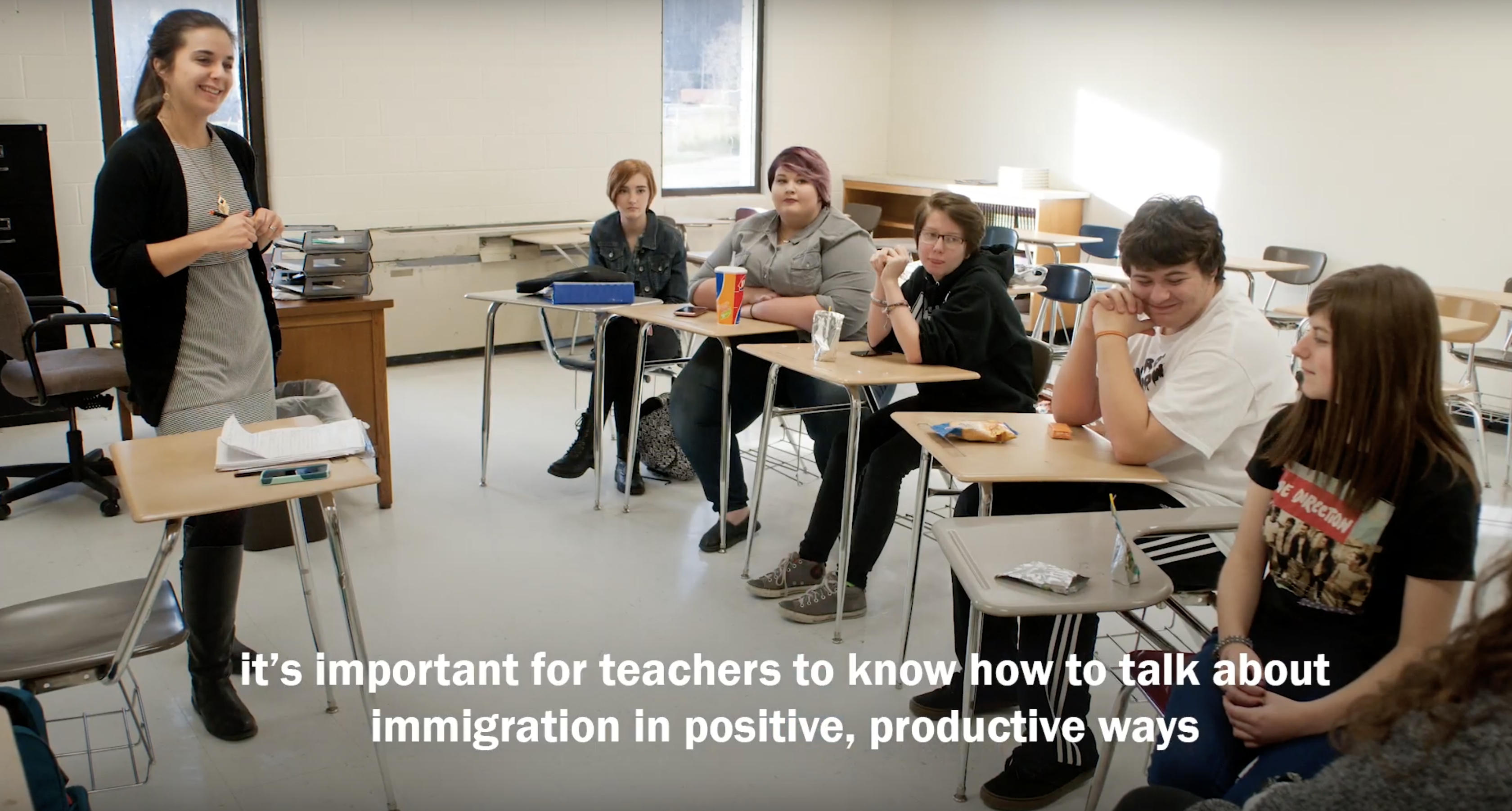
Rising anti-immigrant policies, hate speech, and violence in our communities affect all of us. But the impact on students in our schools is particularly high. Whether students are immigrants themselves, belong to mixed status families, or are disturbed by the threats against neighbors, many are experiencing fear and anxiety that impede learning and healthy development. Educators know how important it is to make classrooms more inclusive and welcoming.
By talking about immigration in positive, productive ways, teachers can disrupt the harsh, xenophobic messages coming from U.S. leadership.
Here are some tips on how to talk about immigration in a time of heightened tension and fear.
1. Build empathy:
Empathy is key. Supporting and welcoming immigrants requires broadening people’s sense of our shared humanity. Research shows that when people think about immigrants as a group distinct from themselves, they tend to support and accept more punitive and dehumanizing policies.
If you talk about immigration and immigrants, be sure to frame the conversation in terms of shared values – like diversity, inclusive communities, and keeping families together. Avoid phrases and language that cue “us versus them” thinking. Remember that we are all in this together. No matter where we come from or how we got here, we are part of the American story.
2. Don’t repeat negative myths and stereotypes – even to counter them:
With so many false and xenophobic ideas circulating, it is important to counter these messages with the truth. But be careful about reinforcing anti-immigrant ideas in the process. Repeating misinformation makes people more likely to believe it is true, and may reinforce both misinformation and the worldview it supports, doing more harm than good. Debunking myths doesn’t work.
Instead, talk about immigration proactively, being careful about the terms you use and the stories you tell. The words and labels we use matter, and they can convey whole worldviews. Don’t repeat dehumanizing language. Instead remember that immigrants are people who are members of our families and communities. If your students are repeating hateful anti-immigrant messages, ask them questions to get them to think about why these ideas exist and where they come from. No matter where we are from, we all belong here.
3. Be truthful and critical about our complex history:
Our country has often welcomed immigrants and benefited from our cultural diversity. One of the most powerful stories we tell about ourselves is that we are a “nation of immigrants.” Americans, this story says, have come from all over the world and found safe haven and better lives here. While this is a popular history that some advocates repeat to build support for immigrant rights in the present, it is not the whole story – and it obscures important truths.
Throughout its history, the United States has excluded people and denied people citizenship and belonging, often on the basis of race. The proclamation that “we are all immigrants” erases the histories of African Americans who descend from people brought involuntarily to this country, and Native American and indigenous people whose ancestors were forcibly displaced. The “nation of immigrants” story also obscures our country’s long history of excluding, restricting, and punishing newcomers.
Confronting these parts of our history and present is as important in this moment as recognizing the ways that communities have indeed embraced newcomers and recognized the humanity of immigrants in the past.
4. Show your support for all students:
Print and display these “We all belong here” posters to send the message: All students are welcome. You can use this crowd-sourced discussion and activity guide to help students explore issues related to racism and discrimination in their lives.
You can also support efforts to establish sanctuary policies in cities and schools. Click here to watch AFSC's webinar recording on creating school sanctuary policies, and check out our other resources on making schools safer for everyone here.